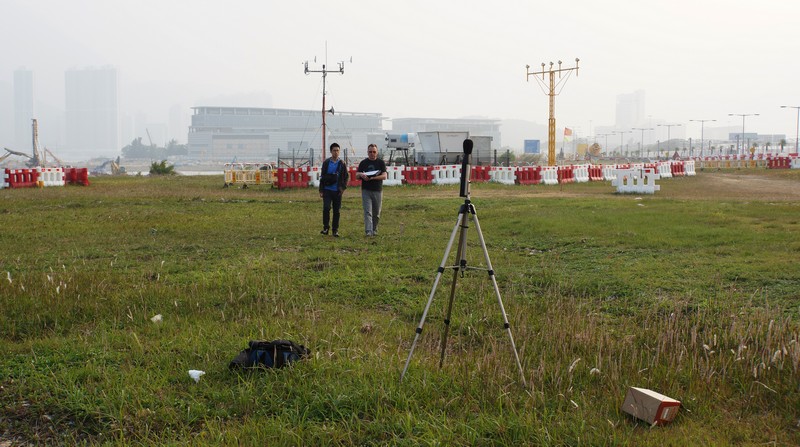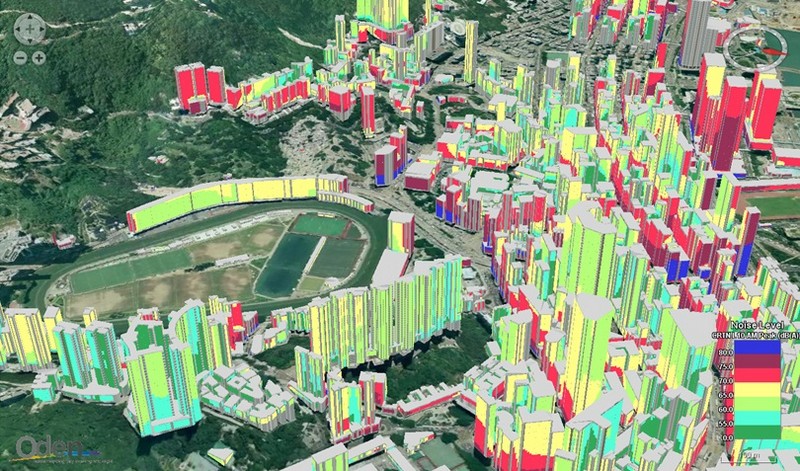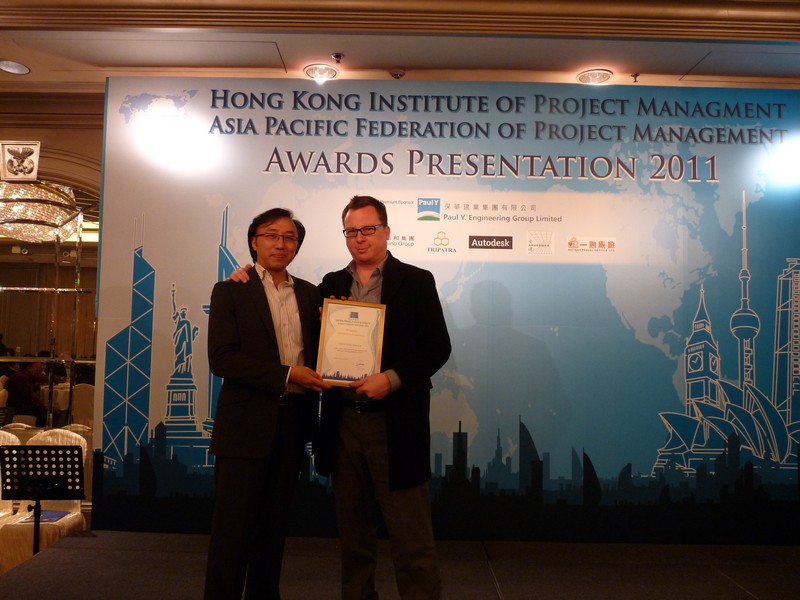An innovative spatial modelling system created by two Hong Kong entrepreneurs stands to save architects and regulators thousands of man hours, and millions in consultancy fees.

A greater awareness of environmental issues has been the spark for dozens of new businesses that did not exist 15 years ago. Combine that still emerging trend with the impact of information technology and there’s a blueprint for development that is faster, greener and better.
NGIS China Ltd was born into this 21st century crucible. The company specialises in taking enormous sets of data drawn from the built environment and manipulating them into visual formats that humans can better understand. The firm’s information technology nous is put to good use in creating models and maps of noise and air pollution, in hydrological modelling and urban planning.
Chris Hoar was named NGIS China’s managing director in 2004. At the time, the company was among a handful of smaller independent noise mapping and acoustic consultants. The company was at the leading edge of Hong Kong-based firms specialising in geographic information systems, a broad term that refers to the manipulation and analysis of spatial and geographical data. Over the past decade, the consultancy’s propriety technology and heritage in software development, as well as substantial funding from investors including the Hong Kong government, has evolved into one all-encompassing web-based service, ODEN – a unique modelling software package that has become the company’s flagship offering.
“ODEN really came about as a way to help government regulatory agencies and developers create better communities for Asia’s expanding middle class,” states Hoar. The software-as-a-service package is flexible enough to be used in a number of situations to accelerate urban planning and environmental assessments.
He says governments in Europe, Hong Kong, Australia and across Southeast Asia have used ODEN (odensystems.net) to model noise and air pollution, and to accurately test mitigation efforts in real time. NGIS clients have also used ODEN to instantly demonstrate if an architect’s proposal for a tower block meets environmental criteria, or how a planned road would impact the natural environment. He says ODEN is helping the construction industry reduce design iterations, saving both time and money.

Forward Planning
Hong Kong’s Housing Authority and Environmental Protection Department are two of the biggest users of the system, having successfully integrated it into their planning processes. The system has also been sold to governments within the European Union. The German state of Thuringen has about 200 users of the system at all levels of their organization, from community level staff, to consultants and environmental management staff. Most recently, the Chinese Ministry for Environmental Protection has used the system to deal with assessment of an ever-increasing number of project applications.
Hoar says the Environmental Protection Department has deployed the service to assess the environmental performance of planned residential developments. ODEN has helped the department move the mountain of compliance-related paperwork associated with each planned development. For their needs, NGIS’s software engineers created 3-dimensional representations of the planned estates, based on the department’s criteria, with a straightforward legend showing what meets code and what doesn’t.
Hoar told PRC Magazine that increasingly tough legislative requirements to better regulate noise and air pollution have significantly increased the workload for local, state and national authorities. In Hong Kong, it was not uncommon to need 40 or more iterations before a development was given the green light. “There’s more that these departments have to do and more to measure than ever before,” he says.
NGIS deputy managing director Raymond Wong says the beauty of the ODEN system lies in its interoperability across platforms, its flexibility, and ease of use. “You see in a lot of big engineering companies, in particular, that there is a tradition of delivering these types of spatial measurement systems in-house. There’s a belief that only they are able to build something to meet their needs. What we’ve made and put online is something that’s simple. We’ve made it easy to access and made it easy for any professional to use.”
Specialist Tool for Generalists
Manipulating the built environment within each model is as simple as clicking, dragging and dropping objects on the screen, or selecting from menu. The graphical representation of terabytes of complex data in 2-D and 3-D is straightforward enough that anyone can interpret the outcomes.

Raymond Wong, Chris Hoar
Until recently, NGIS was installing ODEN’s minimal back-end infrastructure on its clients’ hardware. Hoar says the company is also offering a time-based subscription, which saves clients the considerable expense of purchasing hardware. “A typical deployment costs more than HK$1 million. A subscription service that uses our hardware is going to be a lot more affordable, with a fee beginning at about HK$30,000.”
“The alternative for companies that need instant modelling is really pretty much out of reach. There’s at least HK$150,000 of desktop software and hardware, which excludes any software development required, and then firms have to find someone to run it. And finding the right people with the practical know-how and technical background is difficult. It’s a highly specialised field with software that almost requires a degree in rocket science to understand what’s going on. You shouldn’t have to be a rocket scientist to get the job done.”
And that’s another aspect to the revolutionary nature of this Hong Kong-developed product. Other modelling systems are desktop based but ODEN is delivered through an easy-to-use web interface. Users anywhere can log on from wherever they are.
Wong says managers like the system for creating additional resource deployment flexibility. “The big consultancies in Hong Kong rely heavily on local talent and often have to fly-in best-in-class expertise from their international offices,” he says.
“That ODEN is web-based frees companies of the need to have talent on the ground. There’s also support around the clock.”
While Mr Wong says that creates a substantial saving on consultant’s fees, the service is not designed to replace a consultant’s input in the design process. “We see ODEN as being complementary to the existing network and processes. ODEN leaves room for people to focus on doing a better job, more quickly,” he says.
ODEN was initially designed to model, track and help mitigate noise pollution in urban areas. The name is an acronym for on-demand noise mapping, day, evening and night. With feedback from acoustics engineers and academics from around the Asia-Pacific region, developers have since expanded its use to track air pollution and water run-off. ODEN can process noise pollution from transport infrastructure, including road and rail, industrial areas, and airports and aeroplanes, as well as air pollution through its integration with models including Germany’s MISKAM, AUSTAL2000 and the United States’ AERMOD.











